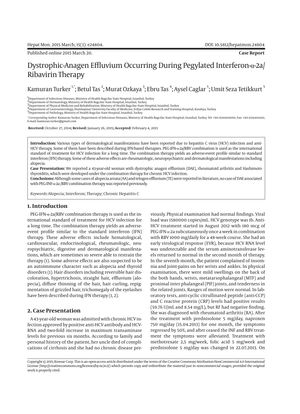TLDR A woman's hair loss during Hepatitis C treatment with PEG-INF-a-2a and Ribavirin was reversible after stopping the medication.
The document describes a unique case of a 43-year-old woman who developed dystrophic anagen effluvium (DAE), rheumatoid arthritis, and Hashimoto thyroiditis while on Pegylated Interferon-α-2a (PEG-INF-a-2a) and Ribavirin (RBV) therapy for chronic Hepatitis C. The patient's hair loss, which started nine months into the treatment, was notable for the absence of inflammation and a high number of dystrophic anagen hairs. This was the first documented case of DAE linked to PEG-INF-a-2a/RBV therapy. The patient's hair regrowth commenced three weeks after discontinuing the treatment and was complete by four months. The study suggests a possible link between the alopecic effect and the pegylated form of interferon, indicating that while some hair loss from PEG-INF/RBV therapy is reversible, it may vary based on the hair cycle phase, the severity of damage, interferon subtype, and individual factors. The persistence of anti-thyroid peroxidase (anti-TPO) antibodies after hair recovery suggests an immunological impact of the therapy. The authors recommend considering DAE in differential diagnosis for patients on antiviral therapy experiencing hair loss and call for more research to understand the phenomenon.
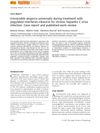 9 citations
,
November 2012 in “Hepatology Research”
9 citations
,
November 2012 in “Hepatology Research” A man lost all his hair permanently after hepatitis C treatment, a side effect not seen before.
48 citations
,
September 2010 in “PubMed” Chemotherapy often causes hair loss, which is distressing for many, but usually reversible.
64 citations
,
January 2009 in “Canadian Journal of Gastroenterology” Interferon and ribavirin can cause serious skin reactions and other health issues.
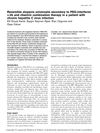 41 citations
,
August 2007 in “European Journal of Gastroenterology & Hepatology”
41 citations
,
August 2007 in “European Journal of Gastroenterology & Hepatology” A woman's total hair loss from hepatitis C treatment grew back after stopping the medication.
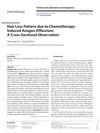 53 citations
,
January 2007 in “Dermatology”
53 citations
,
January 2007 in “Dermatology” Chemotherapy often causes patterned hair loss, with some scalp areas more resistant to hair loss than others.
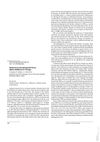 35 citations
,
January 2002 in “Dermatology”
35 citations
,
January 2002 in “Dermatology” A woman's hair loss during treatment with specific hepatitis C drugs grew back after stopping the medication.
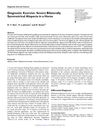 7 citations
,
January 2011 in “Veterinary Pathology”
7 citations
,
January 2011 in “Veterinary Pathology” A horse with severe hair loss was diagnosed with alopecia areata and a yeast infection.
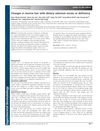 6 citations
,
March 2011 in “Experimental Dermatology”
6 citations
,
March 2011 in “Experimental Dermatology” Too much or too little selenium in the diet can cause hair loss and graying in mice.
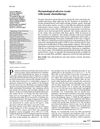 141 citations
,
September 2016 in “European Journal of Dermatology”
141 citations
,
September 2016 in “European Journal of Dermatology” Taxane chemotherapy can cause skin, hair, and nail side effects, which are often under-reported and can affect patient quality of life.
 December 2024 in “Frontiers in Pharmacology”
December 2024 in “Frontiers in Pharmacology” Araliadiol may promote hair growth like minoxidil without being toxic.
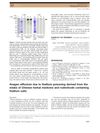 5 citations
,
June 2015 in “Journal of dermatology”
5 citations
,
June 2015 in “Journal of dermatology” A woman and her daughter had thallium poisoning from a herbal drink and rodenticide, causing hair loss and other symptoms.
